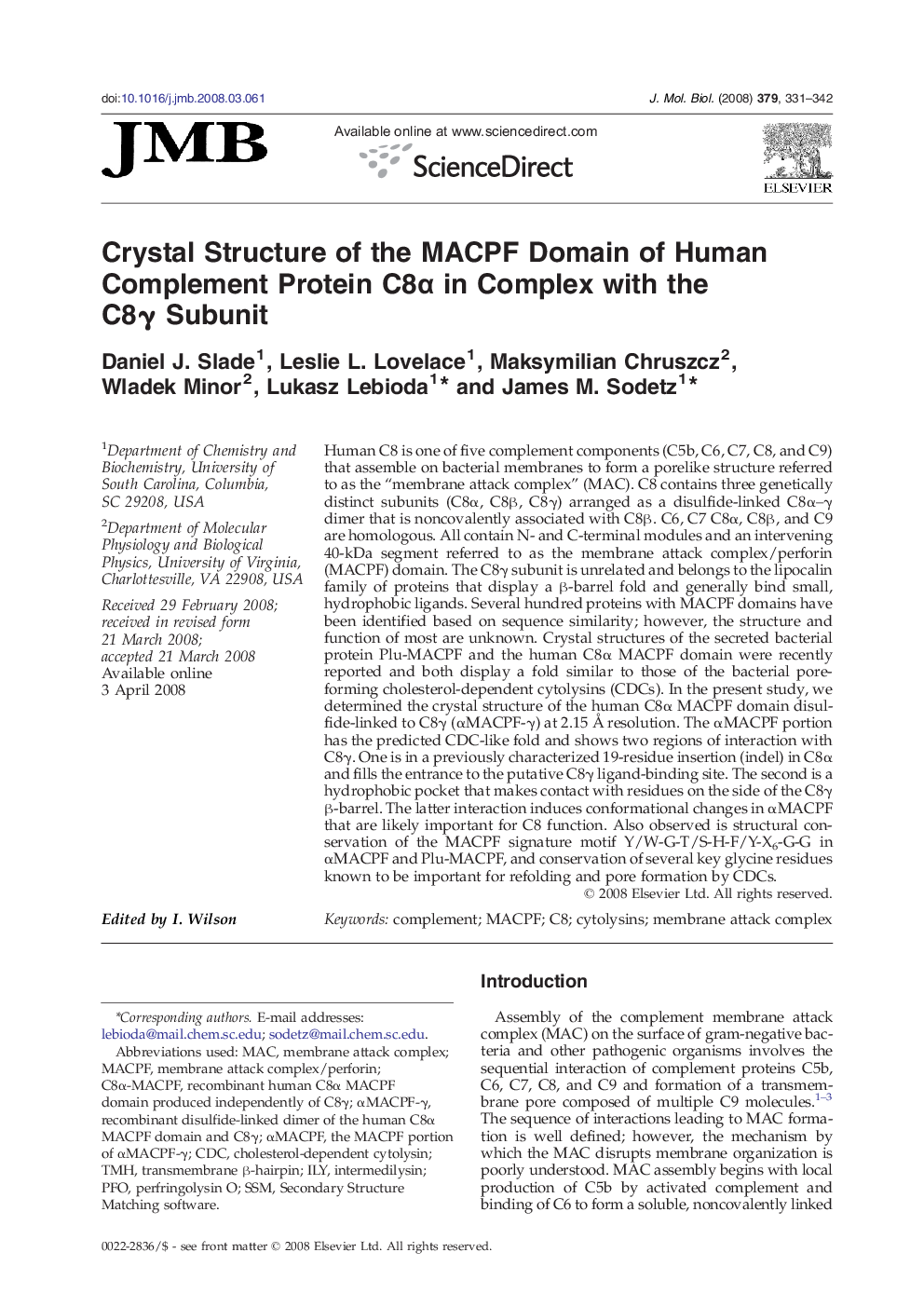| کد مقاله | کد نشریه | سال انتشار | مقاله انگلیسی | نسخه تمام متن |
|---|---|---|---|---|
| 2187488 | 1096121 | 2008 | 12 صفحه PDF | دانلود رایگان |

Human C8 is one of five complement components (C5b, C6, C7, C8, and C9) that assemble on bacterial membranes to form a porelike structure referred to as the “membrane attack complex” (MAC). C8 contains three genetically distinct subunits (C8α, C8β, C8γ) arranged as a disulfide-linked C8α–γ dimer that is noncovalently associated with C8β. C6, C7 C8α, C8β, and C9 are homologous. All contain N- and C-terminal modules and an intervening 40-kDa segment referred to as the membrane attack complex/perforin (MACPF) domain. The C8γ subunit is unrelated and belongs to the lipocalin family of proteins that display a β-barrel fold and generally bind small, hydrophobic ligands. Several hundred proteins with MACPF domains have been identified based on sequence similarity; however, the structure and function of most are unknown. Crystal structures of the secreted bacterial protein Plu-MACPF and the human C8α MACPF domain were recently reported and both display a fold similar to those of the bacterial pore-forming cholesterol-dependent cytolysins (CDCs). In the present study, we determined the crystal structure of the human C8α MACPF domain disulfide-linked to C8γ (αMACPF-γ) at 2.15 Å resolution. The αMACPF portion has the predicted CDC-like fold and shows two regions of interaction with C8γ. One is in a previously characterized 19-residue insertion (indel) in C8α and fills the entrance to the putative C8γ ligand-binding site. The second is a hydrophobic pocket that makes contact with residues on the side of the C8γ β-barrel. The latter interaction induces conformational changes in αMACPF that are likely important for C8 function. Also observed is structural conservation of the MACPF signature motif Y/W-G-T/S-H-F/Y-X6-G-G in αMACPF and Plu-MACPF, and conservation of several key glycine residues known to be important for refolding and pore formation by CDCs.
Journal: Journal of Molecular Biology - Volume 379, Issue 2, 29 May 2008, Pages 331–342